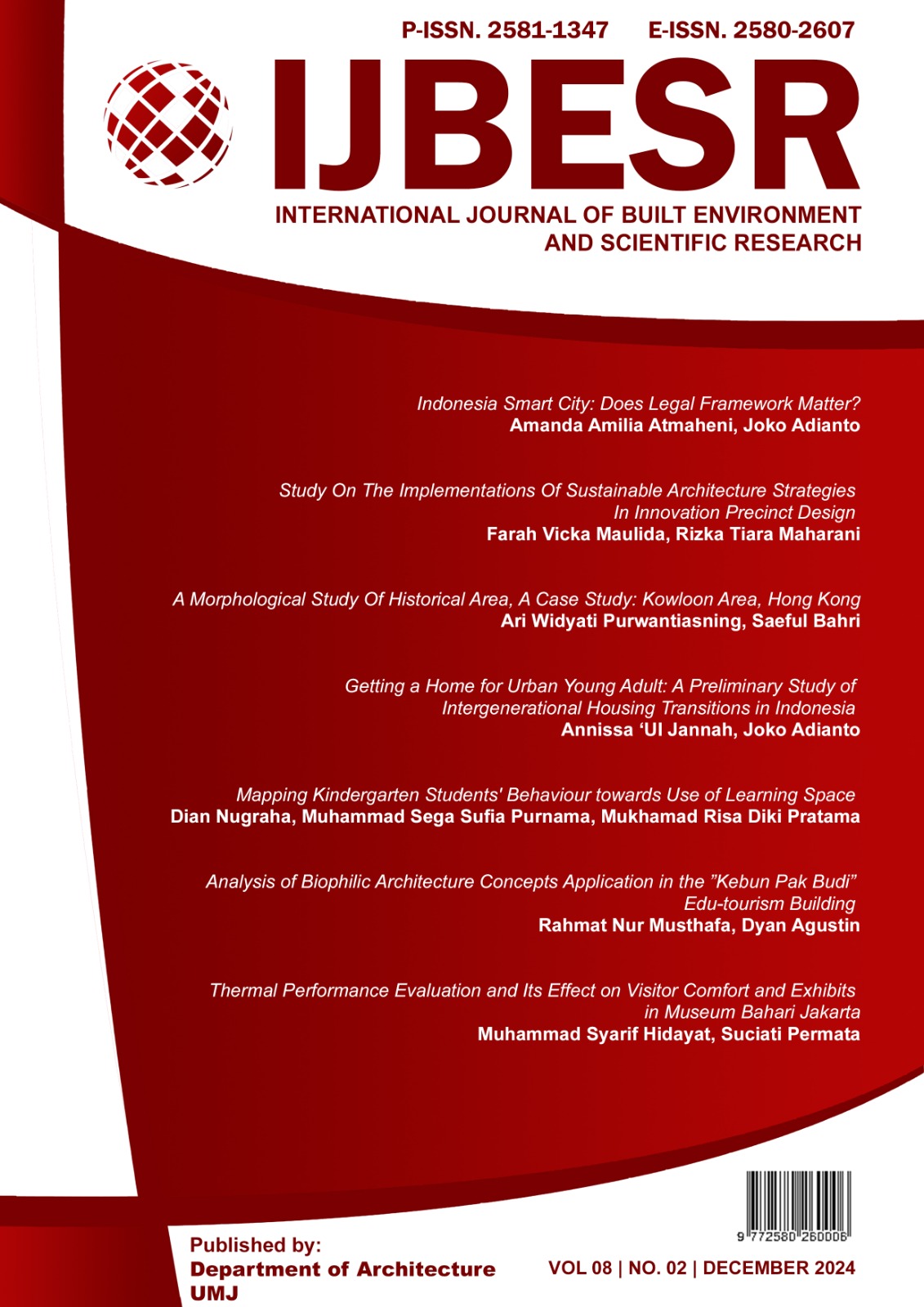Thermal Performance Evaluation and Its Effect on Visitor Comfort and Exhibits in Museum Bahari Jakarta
DOI:
https://doi.org/10.24853/ijbesr.8.2.149-153Keywords:
Adaptive reuse, thermal comfort, visitor satisfaction, museum exhibitionsAbstract
This study evaluates the thermal performance in Museum Bahari, Jakarta, and its impact on visitor comfort and the stability of exhibits. Using both natural ventilation and air conditioning systems, temperature and humidity measurements were taken to assess thermal conditions. The results show that natural ventilation does not meet the standard comfort levels, with average temperatures reaching 29.7°C. Although air-conditioned rooms provided better control, the temperature still exceeded the comfort threshold. Visitor feedback indicated discomfort due to thermal instability. Recommendations include adjusting the opening strategies based on external thermal conditions.References
Background, A., Nicholas, S., Jones, M., Principles,
B.D.G., & Group, T.B. (2008). NMDC guiding
principles for reducing museums’ carbon footprint. UK
National Museum Directors Council: Guiding
Principles for Reducing Museums’ Carbon Footprint,
October, 2-4
Balocco, A., & Grazzini, G. (2009). Numerical
simulation of ancient natural ventilation systems of
historical buildings. A case study in Palermo. Journal of
Cultural Heritage, 10(2), 313-318.
Al Hadrami, S.K. (2014). Head of Museums
Maintenance,
Sharjah
Museums
Department.
Interviewed by Hawra Askari, Sharjah, UAE, 25 August
Martinez-Molina, A., Boarin, P., Tort-Ausina, I., &
Vivancos, J.L. (Year). Assessing visitors' thermal
comfort in historic museum buildings: Results from a
post-occupancy evaluation on a case study.
Ascione, F., Bellia, L., Capozzoli, A., &
Minichiello, F. (2009). Energy saving strategies in air
conditioning
for
museums. Applied Thermal
Engineering, 29, 676-686.
Ascione, F., & Minichiello, F. (2010). Microclimatic
control in the museum environment: Air diffusion
performance. International Journal of Refrigeration, 33,
-814.
ASHRAE (2007). ANSI/ASHRAE Standard 62.1
, Ventilation for acceptable indoor air quality.
Australian Government (2004). Adaptive reuse:
Preserving our past, building our future.







